As trade conditions shift and peak season picks up, many of you are adjusting sourcing, routing, and inventory strategies to manage changing volumes, capacity limits, and tariff-related pressures. We've gathered the latest updates from our teams across ocean, inland, customs, warehousing, LCL, ground freight, and cold chain to help you plan with more clarity and keep your supply chain moving.
To receive Maersk North America Market Update in your inbox, sign up for our logistics newsletter here and update your preferences when prompted via email.
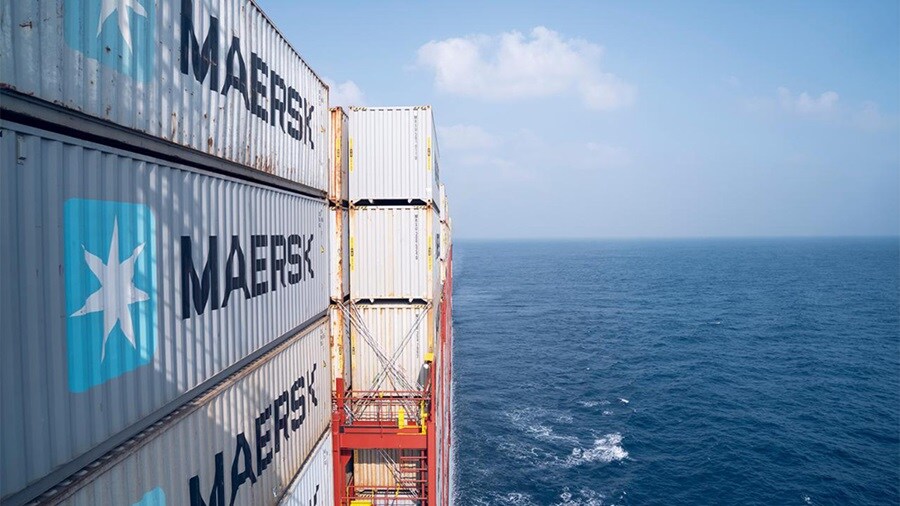
Ocean Update
Europe to North America: Demand from North Europe and the Mediterranean remains strong. The East-West Network (Gemini) vessels are sailing full, and East Med feeder services are operating at max capacity. We expect this to continue through July. To give you more flexibility and help keep your cargo moving, we have added multiple product options from origin. If you’re shipping from North Europe, consider booking to Charleston or Savannah on the updated TA2 service. The TA10 direct service from Turkey to the U.S. East Coast is now active and accepting bookings. The backlog on the CAE service has been cleared. We’ve also removed the structural fifth-week blank sailing, which will help maintain a consistent schedule through the summer.
Indian Subcontinent, Middle East and Africa to North America: Imports from India, Pakistan, and the Middle East remained strong in May. If you’re planning shipments from this region, we recommend booking early to secure space while momentum remains high. Bookings on the Middle East–U.S. East Coast (MECL) service are expected to increase in June as the trade moves into peak season. If you're planning shipments from this region, consider securing space early to stay ahead of demand.
Capacity on the TP16 service is tight due to increased cargo from China following recent tariff activity. We anticipate this strong demand for space will continue into late June. If you're affected, reach out to explore alternative services or routing options.
From South Africa, booking levels are strong and AMEX service utilization remains high. We expect this to continue through June. If you're planning volume increases, early coordination is key. West Africa demand is also strong, especially for cargo routing into Mexico. Available space is limited across the network, so early booking is recommended. East Africa volumes have been steady all year, driven by consistent movement in the textiles and coffee sectors. The MECL service has capacity to support additional shipments from this region in June.
Asia-Pacific to North America: Transpacific bookings slowed in April and May as many importers paused to assess the tariff environment. Following the recent pause in U.S.-China tariffs, bookings have increased. Combined with the start of peak season, we expect tightening space across all Transpacific services in the coming months. If you're planning shipments from Asia, early booking is essential to secure space and maintain schedule reliability.
To support growing demand, we’re launching a new TP9 service starting June 24. The rotation—Xiamen, Busan, Long Beach, Xiamen—will strengthen coverage and offer improved transit times into the U.S. West Coast. If you're adjusting sourcing or routing out of Asia, now is a key time to review your booking plans with your Maersk representative.
To receive the latest updates on your cargo, sign up for ETA notifications or check schedules on Maersk.com. For operational updates in our “Weekly Reader,” subscribe to our advisories at Maersk.com/newsletter.
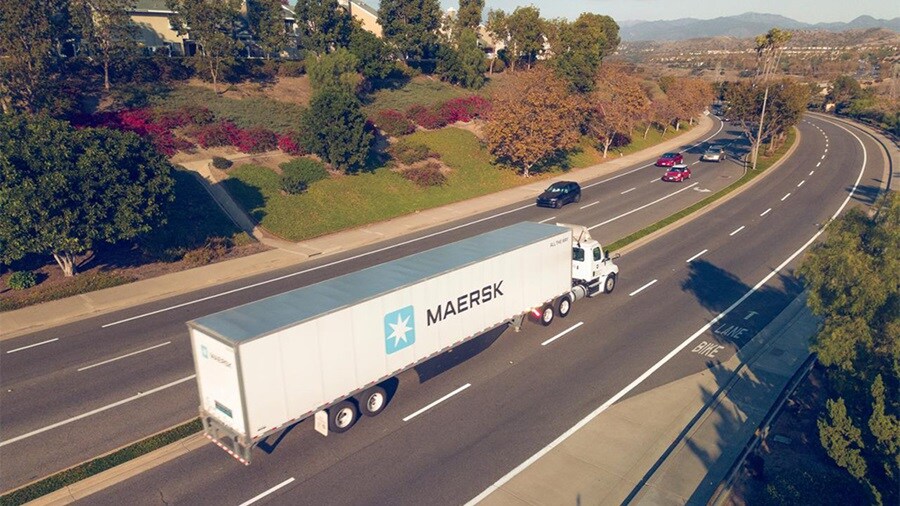
Inland Update
In the U.S., drayage demand is rising fast, especially on Transpacific lanes. Bookings are up more than 50% in recent weeks, putting added pressure on ports, particularly along the West Coast. Based on past peak seasons, you can expect tighter terminal appointment availability, potential chassis shortages (depending on the arrangements you’ve reached with providers), longer turn times, and fewer options for empty returns. These issues may lead to higher costs if inland supply chains are not properly managed.
To stay ahead, book drayage at least three to four weeks in advance and keep your providers updated with the latest forecasts. If available at your terminal, services like peel piles or expedited delivery programs can help maintain cargo flow. Still, delays may happen. It’s a good idea to budget for potential surcharges and clear empty containers from your facilities to free up chassis. If warehouse space is limited, grounded depot storage can be a practical option. Maersk depots offer flexible terms to help reduce demurrage and detention costs while cargo is in storage. If you’re using carrier haulage, Maersk’s drayage solutions cover driver, chassis, and terminal appointment coordination. These packages also lock in pricing, including chassis fees, and offer protection against terminal demurrage when cargo could’ve been accepted within the free time but gets delayed.
In Canada, inland operations are also under pressure. West Coast volumes are up, and trucking shortages are affecting reefer shipments from the U.S. East Coast into Canada, especially as the citrus season approaches. Rail dwell times for Canada-bound cargo remain high in Newark, and congestion at several Canadian terminals is leading to extended wait times and delays. To help relieve pressure, we are working on several different solutions on the West Coast and East Coast–Canada lanes. Rail dwell times in Newark are starting to improve. We’re also working closely with Canadian terminal operators to reduce delays and improve flow.
In the meantime, plan for possible rail delays through mid-June. If you have time-sensitive or overweight shipments, especially reefers, let your Maersk representative know early so we can support your planning. Congestion at Canadian rail terminals may lead to missed appointments and downstream delays, so extra lead time and clear communication will help minimize disruption.
Looking ahead, inland capacity will likely remain tight into early June. But we’re seeing signs of improvement. Rail congestion is easing, and we expect more stable conditions by the end of the month.
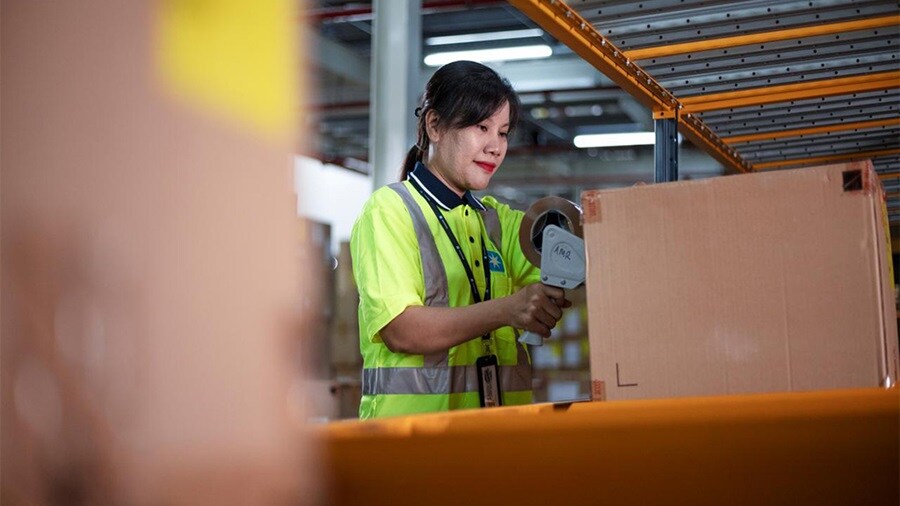
Less than Container Load (LCL) Update
With ongoing market volatility and shifting trade conditions, many importers are adjusting how they move goods. Sudden shifts in demand, tighter timelines, and the potential for unexpected costs have made it harder to rely on traditional shipping models. In response, more businesses are turning to smaller, more frequent shipments to stay flexible and avoid overcommitting to full container loads.
LCL has become a useful solution in this shift. For companies looking to maintain steady inventory flow while managing risk, regular LCL shipments offer predictability without the volume requirements of FCL. It’s a way to keep cargo moving while staying responsive to market changes.
Maersk’s LCL network is fully integrated with our ocean services, giving customers greater schedule reliability and visibility. With control over key assets, from vessels and terminals to inland transport and container freight stations, we’re able to reduce handoff delays and improve coordination across the full journey. If you are reviewing your shipping strategy or looking to add flexibility to your supply chain, LCL may be an option worth considering.

Customs Update
U.S. importers are preparing for country-specific tariff increases set to take effect on July 9, 2025. This has already triggered a rise in import volumes, especially from China and other affected countries, as businesses work to bring goods in ahead of the deadline. At the same time, customs clearance timelines are tightening. Importers and brokers are navigating detailed classification reviews, country-of-origin validations, and trade program eligibility checks, all under compressed timelines. We’re also seeing growing interest in duty mitigation strategies. Tools like tariff engineering, first sale for export, bonded warehousing, and Foreign Trade Zones (FTZs) are increasingly being used to manage exposure and maintain flexibility.
To support you during this period, Maersk is providing full tariff impact assessments to help quantify potential cost increases and identify savings opportunities. We’re also offering operational support through bonded storage and FTZ access, along with guidance on sourcing shifts and tariff engineering. Our customs clearance teams are prioritizing time-sensitive entries and coordinating closely with brokers and warehouses to avoid release delays.
If you’re importing into the U.S., now is the time to review upcoming shipments and assess your tariff exposure. Make sure commercial documents, certificates of origin, and classification data are complete and submitted early. If you’re considering bonded warehousing, FTZs, or other duty-saving strategies, connect with your Maersk advisor to evaluate what makes sense for your business.
For a deeper look at how importers are navigating these changes, you can watch the recording of our recent “Beyond the Tariffs” webinar here. The session featured insights from industry leaders, including experts from Maersk, U.S. Customs and Border Protection, the U.S. Fashion Industry Association, and Altana, covering topics such as forced labor enforcement, trans-shipment rules, and real-world strategies for adapting to shifting trade regulations.
We expect continued customs pressure in the weeks ahead, and future changes remain possible depending on trade negotiations. Our U.S. Customs Services team is here to help you stay ahead. For support or to schedule a tariff analysis consultation, reach out to our Maersk Trade Services team at compliance.mcsi.nam@maersk.com.
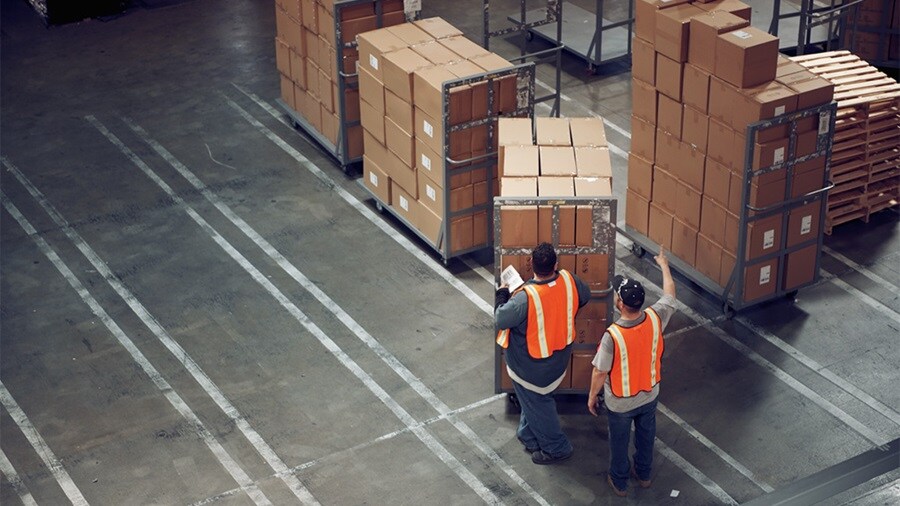
Warehousing Update
We are seeing more interest in domestic consolidation, cross-border moves, and flexible storage setups supporting both immediate needs and longer-term planning. While some customers are scaling back volumes for the second half of the year, many are still positioning inventory closer to key markets.
When the tariff-rates were reduced, volumes surged. The compressed timeline left limited room to adjust production, forcing many to balance immediate import needs with longer-term planning.
To support these shifts, we offer bonded transload services, Canadian storage options (including sufferance and duty drawback), and flexible hub solutions that help delay entry. Customers moving quickly to secure space post-tariff reduction are working with us to optimize inventory flow and explore bonded and FTZ storage strategies.
China-reliant importers continue diversifying sourcing and are turning to us for insights and operational guidance. Many are reassessing how and where they hold inventory, prioritizing cost control, faster turnover, and flexibility to respond to further trade changes.
As the current tariff pause nears expiration, many businesses are preparing for a new normal, one that relies more on bonded and FTZ storage, low-cost warehousing, and efficient parcel distribution to stay agile.
If you're reviewing your warehousing strategy, Maersk can help assess options and align storage, clearance timing, and distribution with your current goals.
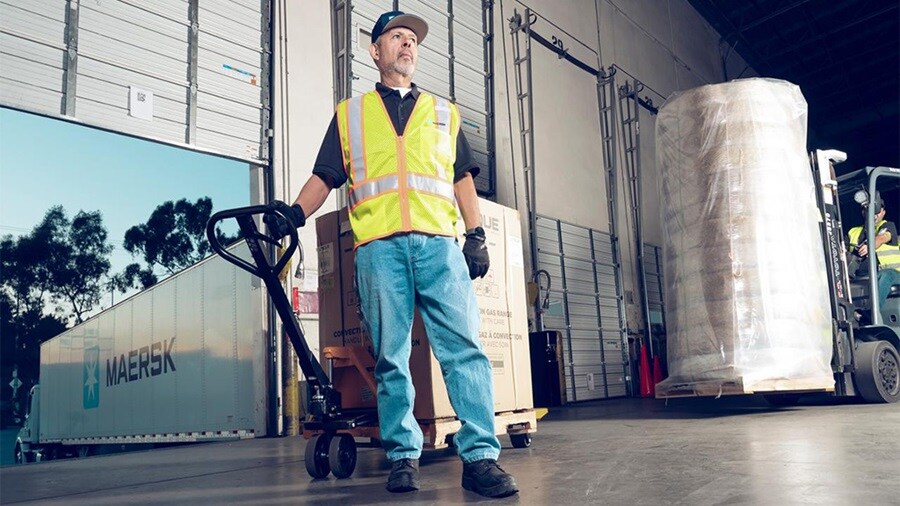
Ground Freight Update
Ground freight conditions in Canada are shifting as both cross-border and domestic trucking markets respond to changing demand. This has created tighter conditions, especially on cross-border lanes into the U.S. and Mexico. The usual balance between inbound and outbound freight has been disrupted, particularly in regions like the U.S. Northeast, Southern States, and border cities, where outbound demand from Canada now outpaces inbound flows. That shift is driving more volatility in, for instance, service reliability.
Within Canada, domestic capacity is expanding as carriers reposition assets previously focused on cross-border lanes. The recent tariff adjustment added pressure, leading to a short-term spike in cross-border moves that further strained available trucking resources. At the same time, Canadian consumers are leaning more toward locally sourced products, which has slowed cross-border freight and lowered average shipment tonnage. Some shippers are delaying long-term volume commitments, adding to network imbalances. The start of the U.S. produce season is also pulling equipment into refrigerated service, limiting dry van availability across key corridors.
These shifts may lead to longer transit times, fewer scheduling options on preferred lanes, and shorter planning windows. If you rely on cross-border freight, consider building in extra lead time and reviewing your logistics setup for flexibility. For domestic shipments, keep an eye on routes where capacity may tighten in the months ahead.
Supply chain visibility will be key in the weeks to come. Staying in close contact with your logistics partners and aligning on volume forecasts early can help reduce the risk of disruption. While capacity is expected to improve once current pressures ease, short-term planning should account for continued fluctuations in both service and equipment availability.
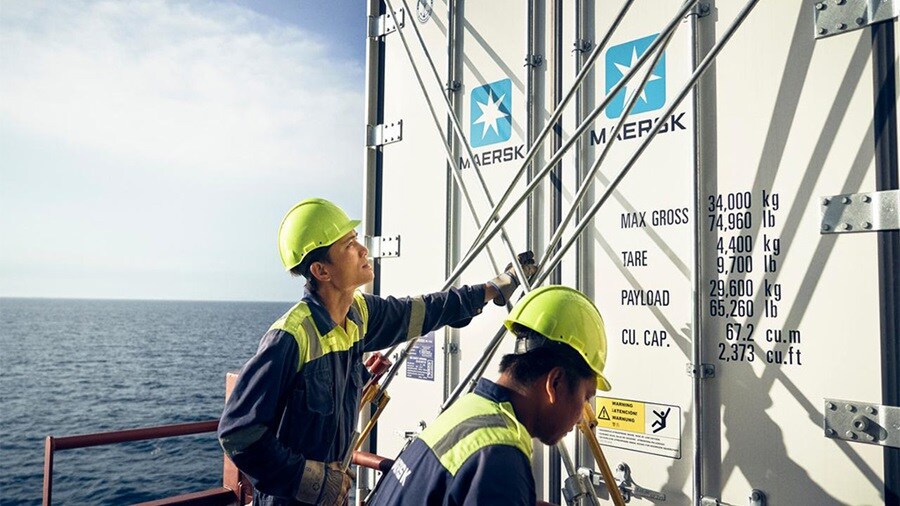
Cold Chain Logistics Update
Cold chain trends are shifting as food manufacturers move away from the overstocking habits of recent years. Many have returned to lean, just-in-time inventory strategies, which has eased pressure on cold storage capacity. Early signs suggest a possible shift back toward inventory hedging. With global supply chains facing more frequent disruption, from weather to trade policy, some importers are rethinking how much stock to hold and where to position it. If you're looking for ways to reduce risk, this may be the right time to reassess your cold chain setup.
The highest risk in cold chain logistics often occurs during handoffs between transportation modes. These transitions can lead to delays, temperature deviations, or added costs—especially for time-sensitive cargo. For shippers managing perishable goods, ensuring coordination across storage, transport, and customs processes is key to maintaining product quality and delivery reliability. A well-connected cold chain can help reduce disruptions and improve visibility from origin to destination.
Disruptions from extreme weather, shifting regulations, and geopolitical instability are likely to continue. If you're planning for the second half of the year, now is a good time to explore where added flexibility or storage capacity could give you an edge. Our Cold Chain team is ready to help you build resilience and stay ahead of changing conditions.
More News & Insights from Maersk from around the world
- Strategic warehousing in the age of tariffs: Tools for financial and operational resilience
- The cost of unreliability in ocean shipping – and how to mitigate it
- Maersk recognized as a Leader in the 2025 Gartner Magic Quadrant for Third-Party Logistics
- Be ready to stay on top of tariffs and compliance
Visit our Insights Hub where we share the latest trends in supply chain digitization, sustainability, growth, resilience, and integrated logistics.
Useful links
To sign up for the Maersk North America Market Update newsletter, click here and update your preferences when prompted via email.
Check Maersk market updates from across other regions by clicking here.
Anything you need, we’re here to help
I agree to receive logistics related news and marketing updates by email, phone, messaging services (e.g. WhatsApp) and other digital platforms, including but not limited to social media (e.g., LinkedIn) from A. P. Moller-Maersk and its affiliated companies (see latest company overview). I understand that I can opt out of such Maersk communications at any time by clicking the unsubscribe link. To see how we use your personal data, please read our Privacy Notification.
By completing this form, you confirm that you agree to the use of your personal data by Maersk as described in our Privacy Notification.










